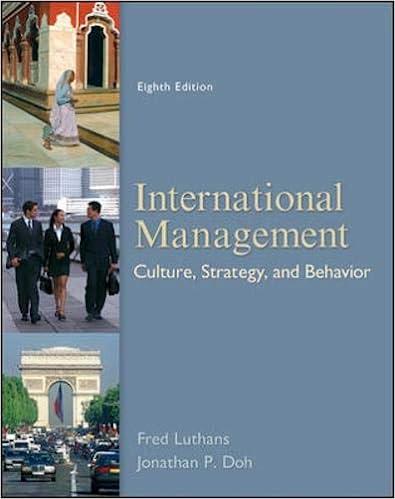Singapore is an island city-state that is located at the southern tip of the Malay Peninsula. The
Question:
Singapore is an island city-state that is located at the southern tip of the Malay Peninsula. The small country covers 239 square miles and is connected by train across the Johore Strait to West Malaysia in the north. The Strait of Malacca to the south separates Singapore from the Indonesian island of Sumatra. There are approximately 4.7 million people in Singapore, resulting in a population density per square mile of almost 18,000 people. About three-fourths of Singaporeans are of Chinese descent, 15 percent are Malays, and the remainder are Indian and European. The gross domestic product of this thriving country is over $235.7 billion, and per capita GDP is around $50,300. One of the so-called newly industrialized countries, Singapore in recent years has been affected by the economic uncertainty around the world, but the currency and prices have remained relatively stable. The very clean and modern city remains the major commercial and shipping center of Southeast Asia.
Singapore is a Southeast Asian financial and high-tech hub, attracting more and more pharmaceutical and medical technology producers from across the globe.
The Madruga Corporation of Cleveland has been producing small electronic toys in Singapore. The small factory has been operated by local managers, but Madruga now wants to expand the Singapore facilities as well as integrate more expatriate managers into the operation. The CEO explained: "We do not want to run this plant as if it were a foreign subsidiary under the direct control of local managers. It is our plant and we want an on-site presence. Over the last year we have been staffing our Canadian and European operations with headquarters personnel, and we are now ready to turn attention to our Singapore operation." Before doing so, the company intends to conduct some on-site research to learn the most effective way of managing the Singapore personnel. In particular, the Madruga management team is concerned with how to motivate the Singaporeans and make them more productive. One survey has already been conducted among the Singapore personnel; this study found a great deal of similarity with the workers at the U.S. facilities. Both the Singapore and the U.S. employees expressed a preference for job-content factors such as the chance for growth, achievement, and increased responsibility, and they listed money and job security toward the bottom of the list of things they looked for in a job.
Madruga management is intrigued by these findings and believes that it might be possible to use some of the same motivation approaches in Singapore as it does in the United States. Moreover, one of the researchers sent the CEO a copy of an article showing that people in Singapore have weak uncertainty avoidance and a general cultural profile that is fairly similar to that of the United States. The CEO is not sure what all this means, but she does know that motivating workers in Singapore apparently is not as "foreign" a process as she thought it would be.
www.sg.
Questions
1. What are some current issues facing Singapore? What is the climate for doing business in Singapore today?
2. Based on the information in this case, determine the specific things that seem to motivate human resources in Singapore.
3. Would knowledge of the achievement motive be of any value to the expatriate managers who are assigned to the Singapore operation?
4. If you were using Figure 12-7 to help explain how to motivate Singapore human resources effectively, what conclusions could you draw that would help provide guidelines for the Madruga management team?

Step by Step Answer:

International Management Culture Strategy And Behavior
ISBN: 9780078112577
8th Edition
Authors: Fred Luthans, Jonathan Doh





